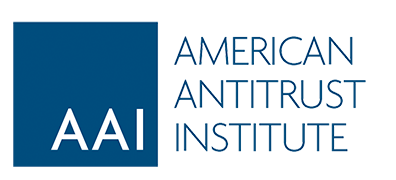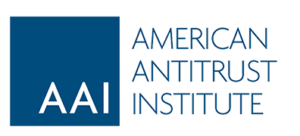Attorney General Eric Holder dropped an aerial bomb on the travel community last month when he announced that the Department of Justice would not pursue its seminal antitrust case against US Airways and American. Instead, the government has permitted the airlines to merge in exchange for a promise to sell off landing slots at LaGuardia and Reagan National airports, along with two gates at each of five additional airports. The settlement is controversial because it does not seem to address the underlying theory of the original complaint, namely that the elimination of US Airways as a fourth national “legacy” carrier will have wide ranging anticompetitive effects, harming flyers nationwide.At the urging of American’s creditors, a U.S. bankruptcy judge has approved the settlement, and on December 4th, a group of private plaintiffs suing to block the deal lost a motion for a temporary restraining order. On December 9th, the airlines consummated the merger, meaning they will begin the costly, protracted process of integrating their mammoth operations while testing the patience of the flying public.
With American’s President, Scott Kirby, having sent a letter to passengers declaring the merger “legally closed,” however, shareholders and creditors might be surprised to learn that the airlines don’t actually have a deal with the government yet. In fact, for at least another two months, the DOJ will be collecting additional information about the merger’s potential impact on airline competition. If the agency learns of something troubling, it can, in theory, walk away from the settlement entirely and take the case to trial. Moreover, the court can still quash the settlement. So why did Attorney General Holder announce the settlement if the government isn’t legally committed, and why on earth would the parties close the deal with this seemingly enormous risk outstanding? The answer to both questions involves a 1974 federal statute called the Tunney Act.
When the DOJ files an antitrust complaint in federal court and opts to settle instead of litigate, the Tunney Act requires that a federal judge review the settlement to ensure it serves the public interest. The Act is designed to foster public confidence in government antitrust settlements, and it is premised on the Louis Brandeis principle that “sunlight is the best of disinfectants.” It requires that the government publish an explanation of its settlement rationale, the court schedule a 60-day public comment period, and the government file a response to any comments. The court must then review the public comments and the response, along with any additional information, and rule on whether the settlement ultimately serves the public interest mission of the antitrust laws.
The Tunney Act has its roots in one of the lesser-known scandals of the Nixon Administration. After Nixon’s DOJ brought an antitrust case against the International Telephone & Telegraph Corporation (IT&T), the agency later agreed to a notoriously weak settlement with IT&T that looked more like a giveaway than a serious effort to address competitive problems. It later came to light that, shortly before the settlement, IT&T donated $400,000 to the Republican National Committee that helped re-elect Nixon in 1972.
Enter Senator John Tunney. In the 1970 mid-term elections, Tunney, the son of boxing champion Gene Tunney, had won a hard-fought battle in California after the ultimate political indignity befell his Republican opponent, George Murphy. In the middle of the campaign, Murphy had his larynx removed to treat a throat malady, and he lost his voice. The defeated incumbent, who had chaired the Republican National Senatorial Committee that helped elect Nixon to his first term in 1968, probably didn’t realize that he would eventually have his karmic revenge. Senator Tunney’s signature legislative response to the IT&T episode has rarely made a peep.
Federal judges called upon to make a public interest determination under the Tunney Act have separately described the task as a “ministerial act,” a “rubber stamp,” and an obligation to do no more than avoid a “mockery of judicial power.” Even after Congress amended the Act in 2004 in an effort to give it some punch, courts have been loath to second guess the DOJ’s prosecutorial discretion. If there is any doubt as to the Tunney Act’s inefficacy, consider that US Airways and American apparently deemed the risk of an adverse Tunney Act outcome so small that they were content to go forward with the merger now notwithstanding that the government can’t formally be bound by the settlement, and the judge can’t approve it, until February 2014 at the earliest.
That the airlines have consummated the merger before the expiration of the Tunney Act period means they have entered into an $11 billion transaction, mindful of their fiduciary duties as public companies, that for the next two months will remain, in theory, at risk of being unwound. Unwinding a merger can be so problematic that the process is colloquially described as “unscrambling the egg.” If there were even the slimmest risk the settlement might be rejected or meaningfully altered, wouldn’t the government or the court have prevented the merging parties from integrating during the Tunney Act review period? Wouldn’t the airlines have been leery of proceeding?
Befittingly, the court scheduled the commencement of the Tunney Act public comment period for December 9th, meaning the 60-day period has opened on the day the merger has closed. Although the court has the authority to reject the settlement and send the parties back to the negotiating table (or, in effect, to trial), the fact that the merger will be a fait accompli makes it all the less likely that anything useful will come out of the Tunney Act process. After consummation, the cost of fixing any problems with the settlement will be higher to the extent the merger has to be unwound. And the court’s public interest determination may be further weighted against corrective action. Forty-three years after the 1970 mid-terms, Senator Tunney’s Act likely will be rendered speechless once again.
This AAI commentary was authored by AAI Senior Counsel and Director of Special Projects Randy Stutz.


